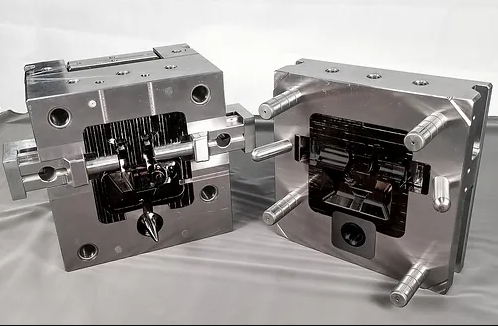Die casting is a process used to create metal parts by injecting molten metal into a mold under high pressure. This process is commonly used in manufacturing industries to produce complex and precise parts. The quality of the final product depends on the quality of the die casting mold used. In this article, we will provide a comprehensive guide on creating a die casting mold.
1. Designing the Mold
The first step in creating a die casting mold is designing the mold. This involves determining the size and shape of the mold, as well as the material it will be made from. The design process should take into account the type of metal that will be used in the casting process, as well as the finished product’s desired properties.
2. Creating a Prototype
Once the mold is designed, a prototype is created. This involves using a 3D printer or other rapid prototyping technology to create a physical model of the mold. The prototype can be used to test the mold’s design and make any necessary adjustments before manufacturing the final mold.
3. Fabricating the Mold
The next step is fabricating the mold. The mold is typically made from steel or aluminum alloy. The mold is created by machining the material using computer-controlled cutting tools. The mold is then polished to a mirror finish, ensuring that the final product has a smooth surface finish.
4. Assembling the Mold
Once the mold is fabricated, it is assembled. The mold consists of two halves, each of which has cavities and ejector pins. These halves are assembled using bolts or clamps. The mold is then checked for alignment and any necessary adjustments are made.

5. Adding Cooling Channels
Cooling channels are then added to the mold. These channels allow water or other cooling fluids to flow through the mold, helping to cool the molten metal and solidify it quickly. The cooling channels are typically drilled into the mold using a computer-controlled machine.
6. Testing the Mold
Before the mold is put into production, it is tested to ensure it is working correctly. This involves injecting molten metal into the mold and verifying that the final product meets the desired specifications. Any necessary adjustments are made, and the mold is retested until it is working correctly.
7. Putting the Mold into Production
Once the mold is tested and approved, it is put into production. The molten metal is injected into the mold under high pressure, filling the cavities and forming the final product. The mold is opened, and the finished product is removed using the ejector pins.
In conclusion, creating a die casting mold is a multi-step process that requires careful planning and execution. The quality of the final product depends on the quality of the mold used. By following the steps outlined above, manufacturers can create high-quality molds that produce precise and complex parts.
-

- Magnesium alloy rigid fork for bicycle -customized die casting metal parts
-

- Magnesium alloy die-casting parts&components for e-bike
-

- Mangensium alloy die-casting Thixomolding metal brakets
-

- Magnesium alloy Thixomolding power batter housing
-

- Magnesium alloy die-casting Auto parts RDM housing
-

- Die cast magnesium parts laptop housing cover D

 0086-750-5616188
0086-750-5616188 +86 13392089688
+86 13392089688 sales@zhongmei-tech.com
sales@zhongmei-tech.com







